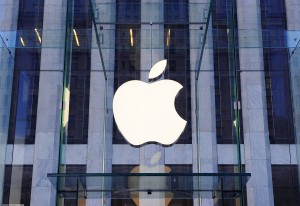Apple Inc.’s (NASDAQ:AAPL) accelerated construction of a huge sapphire glass manufacturing facility in Arizona has made headlines for months, especially in a year when both the iPhone 6 and the much anticipated iWatch are likely to appear on retail shelves worldwide. Though rumors were already rife that one or both of the new devices would feature sapphire glass made there by GT Advanced Technologies (NASDAQ: GTAT), today’s rather panicked condemnation of sapphire glass by Corning, which supplies Apple’s current Gorilla Glass displays, is another interesting puzzle piece for watchers of the Cupertino firm to ponder.
Among other “sins” that Corning’s Corporate Controller, Anthony Tripeny, accused sapphire of having is that it is environmentally unfriendly, requiring 100 times the amount of energy per unit to produce relative to Gorilla Glass. Mr. Tripeny also claimed it would produce a dimmer display and is 1.6 times as heavy as its glass equivalents. These efforts are understandable in light of Corning’s recent introduction of Gorilla Glass 3, but are on logically shaky ground.

Mr. Tripeny’s statement that sapphire glass will make a dimmer looking display is also specious. If the display were several inches thick, then Gorilla Glass would be considerably more transparent than sapphire glass. However, at the wafer-thin thicknesses of glass used for iPhone displays, there is no practical difference in transparency that the human eye can detect.
Another hint of the exciting direction that Apple Inc. and GT may be taking either the iPhone 6 or possibly its successor in, is the evidence that the sapphire display may include advanced solar cell films to provide solar power via the display itself. Some of the evidence for this includes GT patenting an epitaxial growth method that could be used to grow photovoltaic film layers on sapphire glass; a $68 million purchase of solar cell coating machinery from Germany’s Manz AG; and numerous recent solar-related patent filings by Apple Inc. (AAPL).
Corning’s panicky censure of sapphire glass is another hint that Apple may well be planning to produce the iPhone 6 with a solar-cell coated, scratch resistant sapphire display. If the iPhone 6 does not feature this, then its successor may. This would provide a major boost to smartphone display technology. Whether or not such advances as Corning’s new antimicrobial Gorilla Glass can save the company from irrelevance, it is clear why GT Advanced Technologies’ stock has risen by 94.6 percent this year and 523.8% over the past 12 months, and why its alliance with Apple Inc. may be the most important tech news of 2014.




